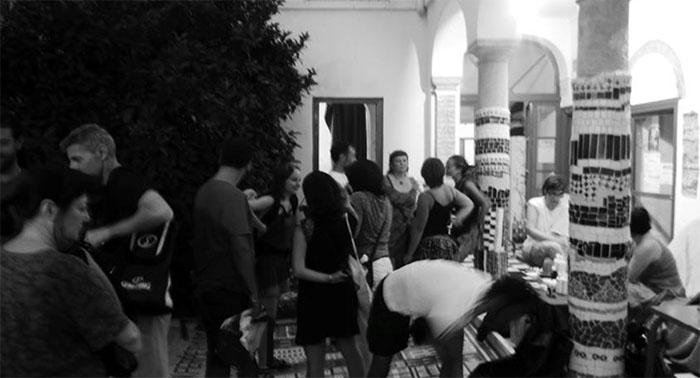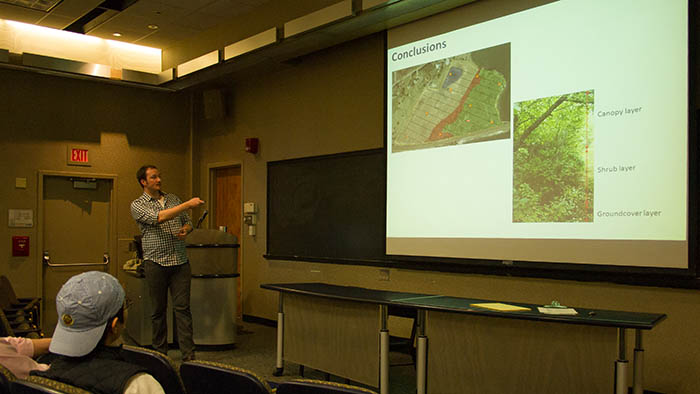This afternoon the second batch of senior presentations started off with Bridget, who reported on the Bridges of Hartford and how they affect heavy metal concentrations in the Park River watershed. Bridget was supposed to present last week, but was too busy beating The College of New Jersey in Lacrosse (15-8).
Greg was next, updating us on invasive species work at Knox Preserve in Southington, CT. He investigated the effects of various treatments (mowing, spraying with herbicides) on plant populations, ecosystem diversity and invasive species abundances. His research is part of a longer research effort by Prof. Douglass on invasive species management.
Lia told us about her analysis of soil temperature data that had been collected since 2007. She had some bad news for us: soil temperatures had increased by an average of 0.25C per year, and two of the thermocouples need replacing. Jon and I will get right on it once the semester is over.

On we moved to the White Mountains: Justin presented baseline data for aluminum and calcium concentrations in forest soils prior to clear cutting. Dan analyzed the same sites for mercury and organic matter concentrations. Their work is the beginning of a long-term study on the effects of clear cutting on forest soils in the White Mountains of New Hampshire.
Brooke finished the afternoon on a high-note presenting her mineral analyses of lake sediments from Otsego Lake, NY. Brooke used X-Ray Diffraction to quantify the abundance of terrigenous materials in lake sedimenst and reconstruct storm events. Her analyses confirmed the influence of eralier storms and revealed a period of low lake levels between 2000 – 6000 years B.P.











